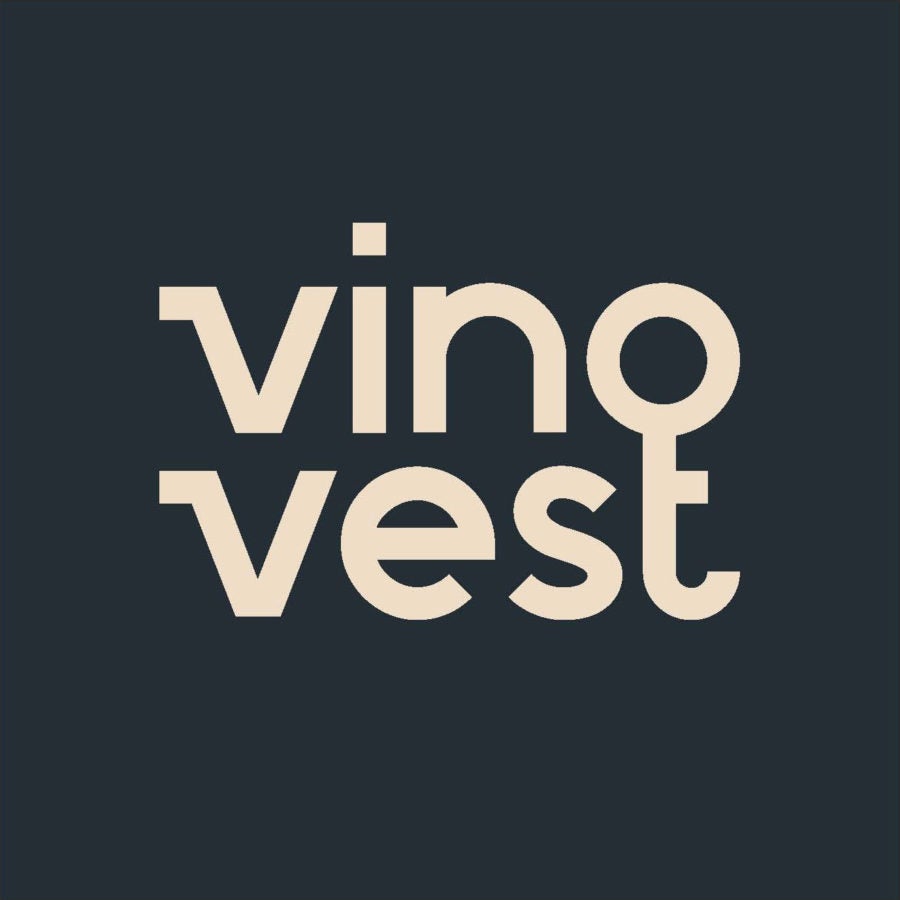The post How to Maximize Returns by Investing in Wine by Dalton Brewster appeared first on Benzinga. Visit Benzinga to get more great content like this.
Some of the more standard alternative investments include real estate investment trusts (REITs), private equity, hedge funds and venture capital. One alternative investment benchmark, the Liv-ex Fine Wine 1000, represents 1,000 investment grade wines and has returned 8.6% year-to-date (YTD). Its return looks even better when you consider that many traditional investments, including the S&P 500 (YTD return of -16.13%), have seen large losses.
It might seem unexpected, but wine is a growing alternative investment class. It’s becoming even easier to gain exposure to this asset class via VinoVest, Vint and consumer staples exchange-traded funds (ETFs).
Why Invest in Wine?
Limited Supply
Wine is a finite asset. While lower-quality wine is relatively common, fine wines are rare. These wines can be classified as investment-grade since they have sufficient demand in the secondary market to support ongoing price growth.
Vintners bottle fine wine in limited amounts under strict conditions and have to attain many standards. For example, most fine wines come from well-established vineyards like those in Bordeaux and Tuscany. These wines should have the right mix of acidity, alcohol, flavor and tannins to increase in quality as they age.
Every investment-grade wine must be rated classic or 95/100 by a professional wine critic. Once these wines enter their drinking windows, demand grows and supply falls, resulting in stable long-term growth.
Diversification
Regardless of the economy, wine and other alcoholic beverages will continue to be in demand. For instance, alcohol sales rose by 20% from March 2020 to September 2020 during the worst months of the COVID-19 pandemic. The one-year return of the Liv-ex Fine Wine 1000 index is 24.6%, compared to the S&P 500’s one-year return of -1.18%.
The Liv-ex Fine Wine 1000 index is fairly diversified since it includes several sub wine indices like the Bordeaux 500, Bordeaux Legends 40, Burgundy 150, Champagne 50, Rhone 100, Italy 100 and the Rest of the World 60. As the names imply, each of these sub-indices tracks investment-grade wine from wine hot spots like Bordeaux, Burgundy and Champagne.
Investing in wine can provide higher returns that can beat inflation and aren’t subject to the many factors that make equity markets so volatile.
How to Invest in Wine
Sponsored
window.LOAD_MODULE_PRODUCTS_TABLE = true;
Vinovest is a platform that’s breaking down barriers of the once gatekept world of wine investments. Vinvovest makes investing in wine easily accessible by offering fully-managed wine portfolios designed with artificial intelligence and industry experts.
The platform manages the bulk of the wine investment process, from selecting, acquiring, insuring, securing and storing authenticated bottles. Investors are able to monitor their wine portfolio online and even access their wine supply in real life, anytime. Vinovest combines the knowledge of experienced sommeliers, wine directors at Michelin star restaurants, as well as leaders from giants like Apple (NASDAQ: AAPL), Bytedance and more. The end goal is to offer investors access to fine wine investments that deliver the potential for solid returns and diversification.
Vinovest is a leading wine investment platform — and for good reason. Take a look at all the pros and cons to Vinovest, as well as all the factors that make this platform stand out in the world of wine investments.
- Access to the wine investment market
- Portfolio diversification
- Fully managed portfolios
- Alternative assets
- Open to all investors (accredited and non-accredited alike).
- Wine investments have low market correlation.
- Learn from wine experts and tech leaders.
- Provides fully-managed portfolios.
- Wine is insured, authenticated, stored and more.
- Transforms wine investments into liquid assets.
- Minimal information on how portfolios are constructed.
- Selling a portfolio can take several weeks to liquidate.
- Vinovest is a relatively new platform.
VinoVest
VinoVest is one of the easiest and most secure ways to own investment-grade wine directly. With this site, you can create a diversified wine portfolio. Some options include wines based on color (red, white, rosé), geographic location, age and purpose (like dessert wine). These wines also factor in critic scores, producer’s brand equity, risk-to-return ratios and secondary market pricing.
One of the biggest advantages of VinoVest is that it secures and insures the wine on your behalf. You don’t have to create or rent a wine cellar. This perk is especially valuable, but it doesn’t come cheap since the lowest annual fee is 2.25%. Its most affordable package, Starter, has a minimum investment of $1,000.
Aside from the Starter package, VinoVest has three other main packages: Plus, Premium and Grand Cru. The Starter program includes 100% authentic wines, access to storage systems and insurance.
One of its other more popular packages is Premium, which takes things up a notch by including custom reviews with a wine portfolio manager and access to even rarer wines for a minimum investment of $10,000.
Sponsored
window.LOAD_MODULE_PRODUCTS_TABLE = true;
securely through Vint’s website
Vint
Like VinoVest, Vint allows investors to directly invest in wine and other spirits online. Both programs have in-house professionals, including sommeliers, who scout and analyze the best wines to ensure they’re investment grade.
These platforms also store and insure wine, which can help prevent steep losses. After all, improper storage or broken bottles can render wine worth thousands of dollars worthless.
One of its main differences is that every spirits offering is regulated by the U.S. Securities and Exchange Commission. Investors who have fewer funds could prefer Vint, since they can buy fractional shares of these wines and spirits for less than $100.
Currently, Vint offers 5,750 shares in The Macallan 50 Year Old Collection Whiskey, with one share costing only $20. The total value of this collection is $115,000, which represents one whiskey bottle. While this whisky is expensive, Vint is a more budget-friendly way to access fine wine and spirits investments.
Consumer Staples ETFs
Besides investing in physical wine bottles, investors can gain exposure to this sector via consumer staples ETFs. No ETFs specifically focus on wine, but consumer staples ETFs own companies that produce alcoholic beverages.
This method won’t be as direct compared to VinoVest or Vint, but these ETFs could be more accessible for the average investor. These ETFs are easier to buy and sell since it can take two to three weeks to amass wine portfolios with VinoVest.
One top consumer staples ETF is the Consumer Staples Select Sector SPDR Fund (NYSEARCA: XLP), with one of its top holdings being Constellation Brands Inc. (NYSE: STZ) at 2%. Constellation brands owns several popular wine brands including The Prisoner Wine Company and Kim Crawford.
This ETF also has exposure to beverage companies like Molson Coors Beverage Co. (NYSE: TAP) and Altria Group Inc. (NYSE: MO). Altria is mainly known for producing tobacco products, but it has a significant ownership in the beer company, Anheuser-Busch InBev (NYSE: BUD).
From a financial standpoint, this ETF offers a respectable 2.21% yield and a low P/E ratio of 3.55%. However, it has a relatively high expense ratio of 1%, which is much higher than the average asset-weighted expense ratio of U.S. funds of 0.45%.
Final Note
Wine is often overlooked as an alternative investment class, compared to private real estate, private equity and venture capital. However, wine tends to stay in demand regardless of the economy. Wine is a physical asset, with the best highest quality wines being considered investment grade.
It’s becoming easier to invest in fine wine thanks to sites like VinoVest, Vint and consumer staples ETFs.
The post How to Maximize Returns by Investing in Wine by Dalton Brewster appeared first on Benzinga. Visit Benzinga to get more great content like this.
- '
- "
- 000
- 100
- 2020
- access
- accessible
- accredited
- acquiring
- advantages
- All
- alternative
- amounts
- annual
- Apple
- artificial
- artificial intelligence
- asset
- Assets
- Authentic
- authenticated
- average
- barriers
- becoming
- beer
- being
- Benchmark
- BEST
- Biggest
- Block
- border
- brand
- brands
- buy
- bytedance
- capital
- class
- classic
- collection
- come
- commission
- Common
- Companies
- company
- compared
- Cons
- consumer
- content
- continue
- could
- COVID-19
- COVID-19 pandemic
- create
- custom
- Demand
- designed
- details
- direct
- directly
- Directors
- diversification
- diversified
- Doesn’t
- dollars
- down
- during
- easily
- economy
- Enter
- equity
- especially
- estate
- ETF
- ETFs
- Event
- example
- exchange
- exchange-traded
- experienced
- experts
- factors
- financial
- fine
- First
- Focus
- fractional
- funds
- geographic
- goal
- good
- great
- Group
- Growing
- Growth
- Hedge Funds
- height
- help
- High
- higher
- Holdings
- How
- How To
- However
- HTTPS
- image
- Inc.
- include
- includes
- Including
- Increase
- index
- industry
- inflation
- information
- insurance
- Intelligence
- investing
- investment
- Investments
- investor
- Investors
- IT
- Italy
- knowledge
- known
- large
- lead
- leaders
- leading
- LG
- Limited
- Liquid
- location
- long-term
- MAKES
- managed
- manager
- March
- march 2020
- Market
- Markets
- medium
- might
- minimum
- Monitor
- months
- more
- most
- names
- Nasdaq
- Navigation
- New Platform
- NYSE
- offer
- offering
- Offers
- ongoing
- online
- Options
- Other
- own
- ownership
- package
- pandemic
- partner
- physical
- platform
- Platforms
- Popular
- portfolio
- portfolios
- potential
- Premium
- price
- pricing
- private
- Private Equity
- process
- produce
- Product
- Products
- professional
- professionals
- Program
- Programs
- PROS
- provide
- purpose
- quality
- rating
- real estate
- real life
- regulated
- Rent
- represents
- REST
- Restaurants
- return
- returns
- review
- Reviews
- S&P 500
- sales
- Scout
- secondary
- sector
- secure
- Securities
- Securities and Exchange Commission
- sell
- several
- Share
- Shares
- significant
- since
- site
- Sites
- So
- solid
- some
- specifically
- Sponsored
- standard
- standards
- Star
- started
- stay
- storage
- store
- subject
- supply
- support
- Systems
- Tap
- tech
- the world
- thousands
- Through
- top
- traditional
- transition
- u.s.
- U.S. Securities
- U.S. Securities and Exchange Commission
- under
- value
- venture
- venture capital
- while
- WHO
- windows
- world
- worth
- year
- Yield















